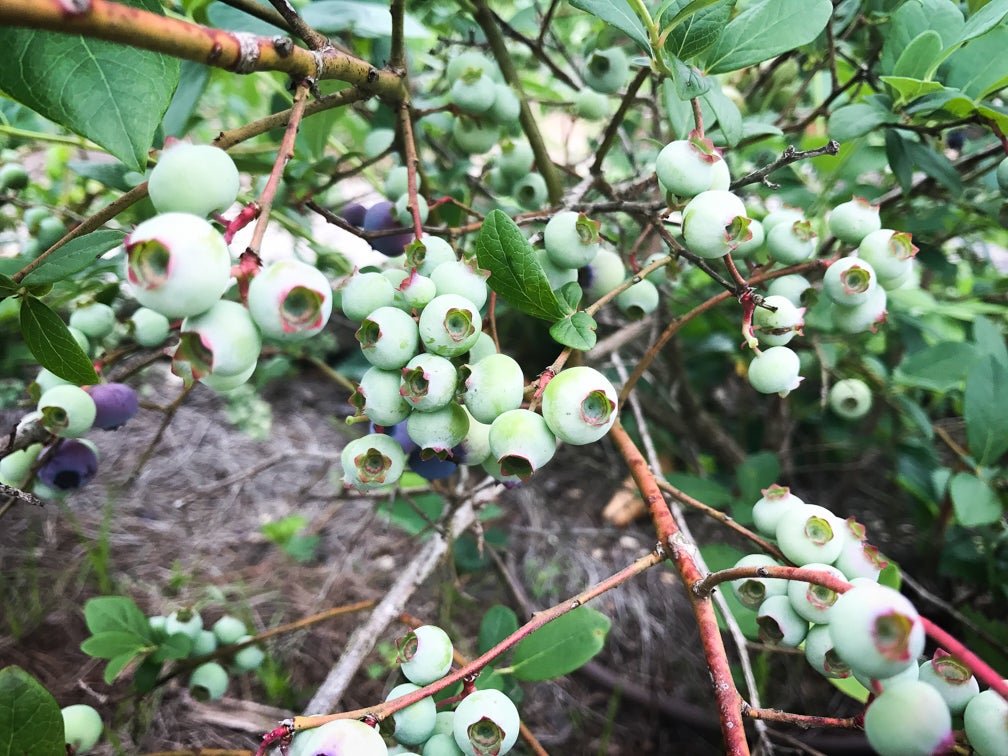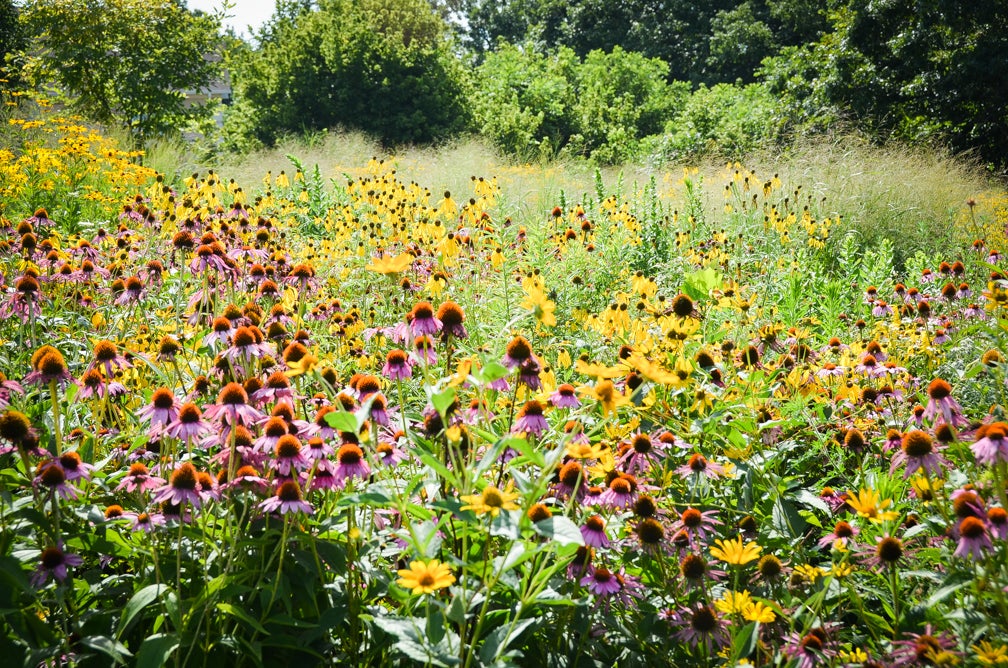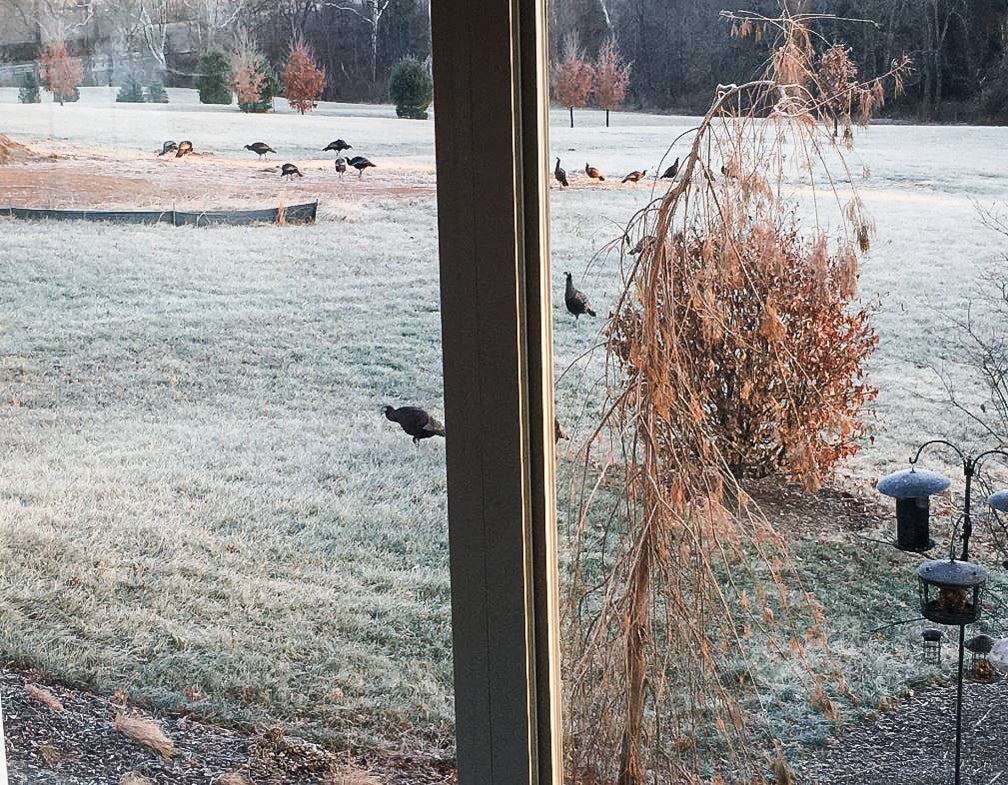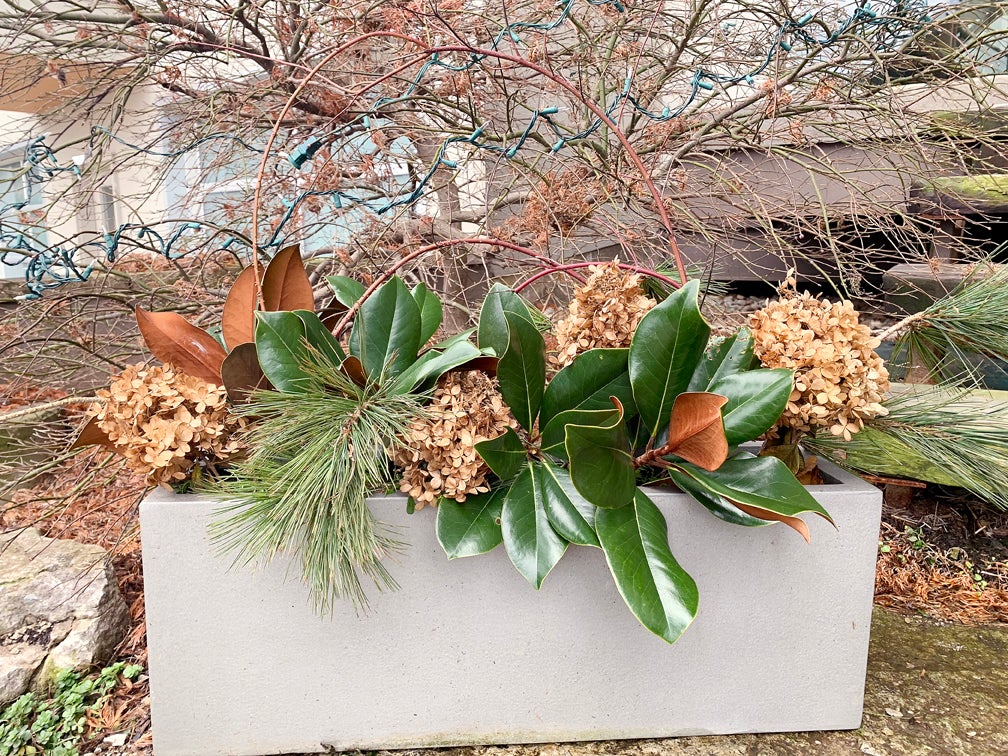If you plant it, they will come. Just one season after planting a variety of trees, shrubs and vines, plus removing invasive species, turkeys seem to love this refuge in The Reserve.
The existing, multi-branched, mature trees in the wooded perimeter provide the roosting area and the open meadow provides a feast. Like any animal, they need good forage and good cover.
In Franklin County, they are typically found in forests, clearings and meadows, and open forests. If you’d like to see wild turkeys (among other wildlife) in your landscape, here are a few things you can provide:
- Remove invasive species. The Reserve was overgrown with Japanese honeysuckle vine, Japanese bush honeysuckle, poison hemlock, garlic mustard and much more. Removal of the invasive species gives the native species a chance to populate the area and flourish.
- Create a prairie or meadow area full of native grasses, sedges and wildflowers. Turkeys will feed on the plant buds and shoots in early spring and these plants will also provide seeds to eat later in the season.
- Plant nut bearing trees, such as native oaks, pecan, and beech. Choose a variety of native oaks — acorns are a main food source and oaks not only provide a great food source for turkeys, but many other species too.
- Plant fruit producing plants — crabapples, dogwood, cherry, wild grapes and blueberries. On this particular project, we planted a lot of blueberries! Plant berry vines such as Lonicera sempervirens (Trumpet honeysuckle), Passiflora incarnata (hardy passion vine), and Parthenocissus quinquefolia (Virginia creeper).
- Go natural. Cut out the pesticides, as turkeys get protein by eating insects. Insects make up about 10% of an adult turkey’s diet, and an even larger percentage of a turkey chick’s diet. Turkey’s, along with other wildlife, can potentially keep insect pests under control on your property. In the fall, leave some leaves in your garden for the turkeys to enjoy salamanders, frogs, snakes and lizards that live in the leaves and decomposing logs.














